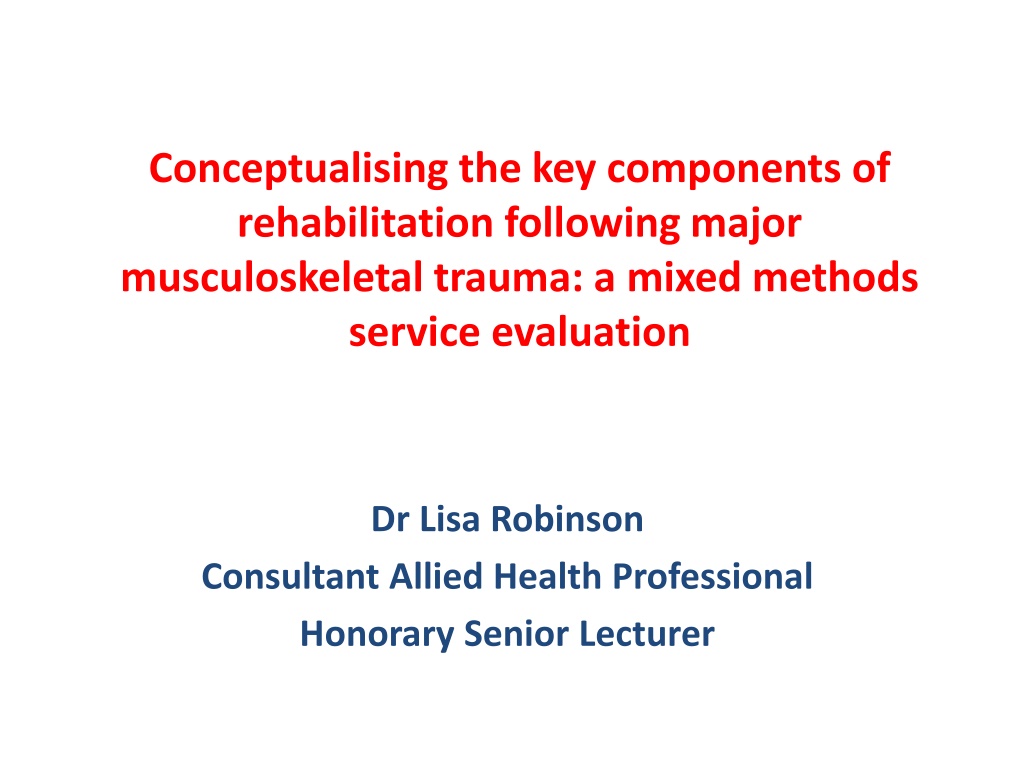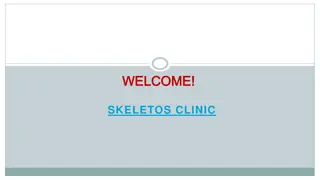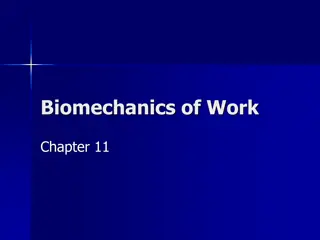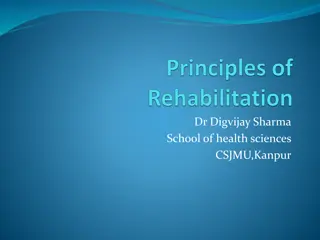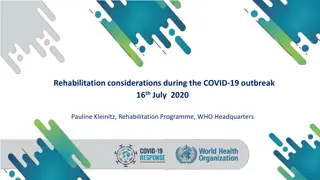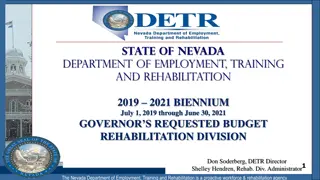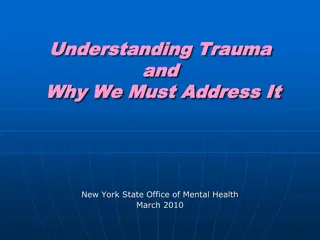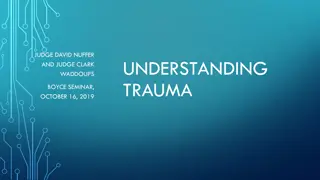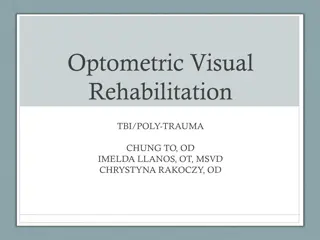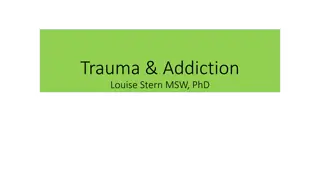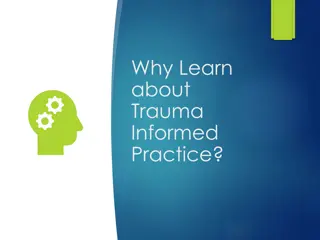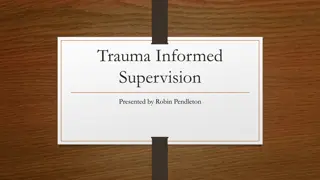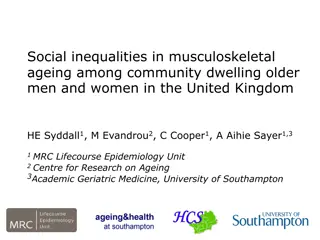Evaluation of Rehabilitation Components for Musculoskeletal Trauma
This evaluation focuses on the rehabilitation needs of individuals with major musculoskeletal trauma, aiming to identify, prioritize, and enhance services. The project involves generating ideas, sorting and rating statements, and mapping key components such as long-term support, therapy input, and early rehabilitation. Dr. Lisa Robinson leads this mixed-methods evaluation in response to the lack of dedicated rehabilitation provision for complex musculoskeletal trauma cases.
- Rehabilitation Evaluation
- Musculoskeletal Trauma
- Service Enhancement
- Mixed Methods
- Healthcare Professionals
Download Presentation

Please find below an Image/Link to download the presentation.
The content on the website is provided AS IS for your information and personal use only. It may not be sold, licensed, or shared on other websites without obtaining consent from the author. Download presentation by click this link. If you encounter any issues during the download, it is possible that the publisher has removed the file from their server.
E N D
Presentation Transcript
Conceptualising the key components of rehabilitation following major musculoskeletal trauma: a mixed methods service evaluation Dr Lisa Robinson Consultant Allied Health Professional Honorary Senior Lecturer
Background 2012 reorganisation of acute trauma pathways in England 20% increase in survival from serious injury Only 5% access to specialist rehabilitation Lack of dedicated provision for patients with complex MSK trauma
Project aims 1. To identify the clinical service needs of individuals accessing the MTRS 2. To prioritise these needs 3. To determine whether each of these needs is currently being met 4. To plan targeted service enhancements
Part 1: ideas generation Focus prompt: A specific way the rehabilitation service really makes a difference to people following major trauma is . Participants (n = 58): - 28/30 consecutive patients attending outpatient clinic over 6 week period - 30/66 multidisciplinary healthcare professionals
Part 1: ideas generation 204 statements from 58 participants 1 Ideas synthesis / data reduction by LR Independent verification by KH 2 66 statements for sorting and rating 3
Part 2: sorting and rating 1. Sorting (8 patients and 26 healthcare professionals) Participants asked to individually sort statements into themes or groups and to name each theme or group. 2. Rating (22 patients and 26 healthcare professionals) Rate each statement (1-5 Likert scale) based on: - Perceived importance - Current success
Point Map 47 65 38 1 12 8 3 63 11 27 26 37 10 40 60 16 57 25 24 51 31 32 4 44 20 9 17 30 14 34 5 18 41 19 49 45 56 23 58 22 52 55 53 35 33 39 62 59 15 54 7 43 29 61 50 2 21 13 48 36 46 42 64 28 6
Cluster Map Long term support 47 65 38 1 12 Planning for home 8 3 63 11 Emotional and psychological wellbeing 27 26 37 10 40 60 16 57 25 24 51 31 32 4 44 20 9 17 30 14 34 5 18 41 Structured therapy input 19 49 45 56 23 58 Communication and coordination 22 53 52 55 35 33 39 62 59 15 54 7 43 29 Early rehabilitation 61 50 2 21 13 48 36 46 42 64 28 Rehabilitation environment 6
Pattern Match - Importance vs Success (all participants) Importance Success 4.53 4.53 Planning for home Early rehabilitation Early rehabilitation Emotional & psychological wellbeing Rehabilitation environment Long-term support Structured therapy input Communication & coordination Rehabilitation environment Long-term support Emotional & psychological wellbeing Structured therapy input Planning for home Communication & coordination 3.94 3.94 r = 0.49
Importance Patients Planning for home Success Patients 4.61 4.61 Early rehabilitation Early rehabilitation Long-term support Rehabilitation environment Long-term support Structured therapy input Rehabilitation environment Emotional & psychological wellbeing Planning for home Structured therapy input Emotional & psychological wellbeing Communication & coordination Communication & coordination 4.07 4.07 r = 0.67 Importance Staff Early rehabilitation Planning for home Success Staff 4.49 4.49 Early rehabilitation Emotional & psychological wellbeing Rehabilitation environment Communication & coordination Long-term support Structured therapy input Rehabilitation environment Emotional & psychological wellbeing Long-term support Structured therapy input Planning for home Communication & coordination 3.84 3.84 r = 0.40
5. Support to overcome the mental stress of an incident as opposed to just focusing on physical injuries. 14. Being treated with dignity, which is important at this most vulnerable of times. 15. Encouraging patients to list their own goals. 17. Staff who are friendly and approachable. 20. Focusing on the patient as an individual, with individual needs. 30. A positive outlook from staff when patients feel quite depressed by their injuries. 52. The constant support and encouragement provided during therapy sessions. Go Zone - Emotional and psychological wellbeing Emotional & psychological wellbeing 4.81 14 17 20 30 15 52 5 62 53 4.17 22 51 Success 22. Providing a confidential environment where patients can talk about their worries. 53. Setting challenging goals that help patients both physically and mentally when achieved. 19 45 27 2.89 3.3 4.37 4.93 Importance
Go Zone - Rehabilitation environment 6. Having a dedicated gym area, which a lot of acute wards don't have. 28. Having an accessible kitchen to promote independence. 48. Being on a dedicated rehabilitation unit with more privacy and more focused support specific to their injuries 59. Input from skilled staff who have a wide range of expertise in trauma Rehabilitation environment 4.81 6 48 28 59 54 64 4.3 36 61 29 39 42 36. Having pain relief readily available. 39. Having access to the specialist pain team. 64. A well laid out environment, which makes moving around easier. 50 Success 2.89 3.3 4.32 4.93 Importance
Summary Importance of continuum of rehabilitation provision across injury trajectory Platform to track future service changes Facilitate co-design of new rehabilitation interventions for individuals following major MSK trauma
Thank you for listening! Comments / Questions ..
More information Robinson LJ, Stephens NM, Wilson S, Graham L, Hackett K (2019) Conceptualizing the key components of rehabilitation following major musculoskeletal trauma: a mixed methods service evaluation. Journal of Evaluation in Clinical Practice DOI:10.1111/jep.13331 lisa.robinson@ncl.ac.uk Dect phone: 0191 2824266 Twitter: DrLisa_AHP
